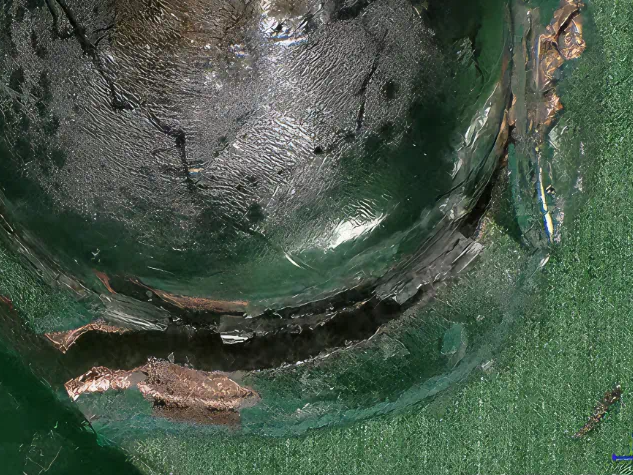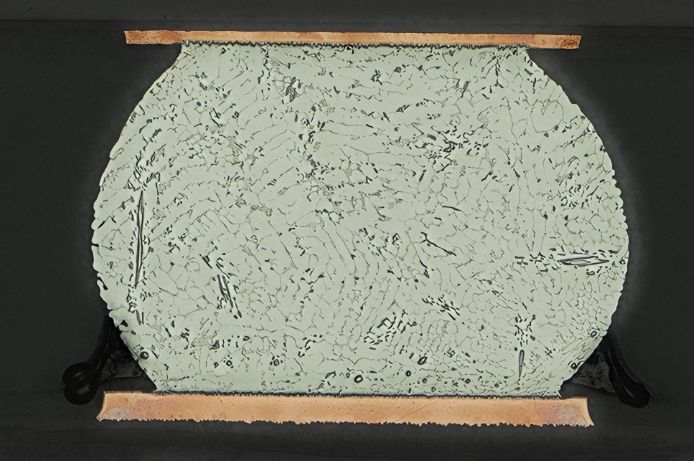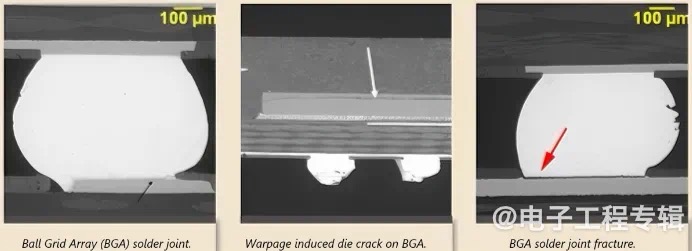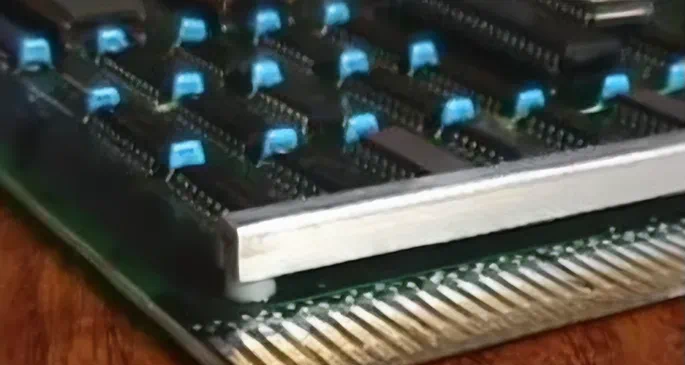Thin PCBs: Challenges of BGA Packaging
 February 17, 2025
February 17, 2025
In the electrical design process, certain design choices must be made. One example is the design of USB Type-C connectors using bridge connectors. In this case, the overall thickness of the PCB is limited because the thickness of the bridge connector dictates the overall thickness. Historically, the standard PCB thickness is 0.063 in (1.57 mm).
Before PCBs were introduced, transistor-based electronic devices were typically assembled using a method known as breadboarding, which involved using wood as a substrate. However, wood is fragile, making the assembly process very delicate. To address this, the bakelite board, commonly used as a workbench surface, became the standard substrate for electronic components, with a thickness of 1/16 in, marking the beginning of this thickness for PCBs.

Taking the example of Wurth Elektronik's USB 3.1 plug, device number 632712000011, the device datasheet suggests using a PCB thickness of 0.8 mm / 0.031 in for optimal performance. This thickness is common across various PCB manufacturing facilities. A 0.031 in PCB is relatively easy to manufacture, as many PCB manufacturers produce 6-layer PCBs with 1 oz copper for each layer.
However, designing and using thin PCBs also presents several challenges. One major issue is their mechanical fragility. Thin PCBs are softer and more prone to bending or warping, making them difficult to handle during assembly and more susceptible to damage. The handling processes include picking and placing during assembly, drilling, in-circuit testing (ICT), and functional probing tests during functional testing.
Secondary handling is performed by the end user, such as dropping devices containing PCB assemblies (PCBA). Additionally, thin PCBs often require specialized manufacturing processes and materials, leading to increased production costs. Component placement becomes more critical as traces may need to be placed closer together, increasing the risk of short circuits and signal interference.
Moreover, thin PCBs face challenges in thermal management due to reduced thermal mass. Addressing these challenges necessitates careful consideration during the design, manufacturing, and assembly phases to ensure the reliability and performance of the final product.
These issues become particularly critical when designers install ball grid array (BGA) components on 0.031 in thick PCBs. Most major manufacturers recommend a minimum thickness of 0.062 in for PCBs when installing BGAs.
How to Test Durability
The mechanical durability of PCB components is typically assessed through drop testing. Requirements for PCBA drop tests usually include specifying the drop height, drop surface, number of drops, drop direction, acceptance criteria, and testing standards. The drop height is the distance the PCBA falls, usually between 30 to 48 in, depending on the application and industry standards.
Additionally, the drop surface must be determined, whether it is concrete or wood. Manufacturers specify the number of drops the PCBA must withstand, typically between 3 to 6 times. The direction of the PCBA during the drop is also prescribed, whether facing down, facing up, or on its edge or corner. Acceptance criteria, such as functionality after drops and any visible damage, are clearly defined.
Testing processes are guided by standards such as IPC-TM-650 or specific customer requirements. For medical devices, drop test requirements are defined in IEC 60601-1 Third Edition 2005-12, Section 15.3.4.1. By establishing these requirements, manufacturers can ensure their PCBAs and products are robust enough to maintain functionality even after drops and impacts.
In drop tests, solder joint failures may not be detected until functional failure is observed. BGAs can fail due to assembly-related issues like thermal stress during soldering or poor solder joint quality. Thin PCBs may weaken due to excessive mechanical shock and vibration during assembly.
These defects can be identified during drop tests, as BGA components may not withstand the stresses encountered. X-ray inspection, optical inspection, or electrical testing can be used to diagnose BGA failures. Detailed analysis can be performed using cross-section analysis via scanning electron microscopy (SEM).

BGA solder joint showing micro-cracks.

Cross-section of a healthy BGA.

Various BGA failure modes.
How to Repair BGA Failures on Thin PCBs
Solder pad de-lamination refers to the cracking of the laminate under the copper pads for surface-mounted components, typically occurring during mechanical events. Initial cracks can propagate, affecting adjacent copper traces and resulting in open circuits. This issue is more common in lead-free components due to differing laminate materials. Mitigation strategies include reducing stress on the laminate or using stronger, more resistant materials. This can be achieved through mechanical stretching of the PCB or by changing the laminate material.
Thin PCBs are more prone to warping, and if the following requirements are not met, additional fixtures (stiffeners or support boards) may be needed for processing on the production line. PCB stiffeners are not part of the PCB itself but are external structures that provide mechanical support.

Aluminum bar as mechanical PCB stiffener.
Using corner adhesives/epoxy or BGA underfills at the corners of the BGA can enhance the strength of the PCB, preventing bending and subsequent failures. During PCB assembly operations, it is crucial to limit the bending of the PCB strictly. Supporting the PCB during through-hole drilling, pick-and-place, ICT, or using flying probes for functional testing is essential.
It is also important to match the recommended BGA soldering profile. Failing to follow the recommended soldering profile can lead to cold solder joints, exacerbating the issues. Sufficient thermocouples should be present on the PCB panel to monitor temperature. Ensuring BGA pad sizes meet manufacturer recommendations is critical.
Addressing the Challenges of Thin PCBs
Thin PCBs (0.031 in) can weaken PCB components, making them more susceptible to mechanical and thermal stresses. Unique challenges arise when installing BGAs on thin PCBs. However, by carefully controlling the PCB handling process and implementing the design solutions discussed in this article, the design challenges and risks can be effectively managed.
